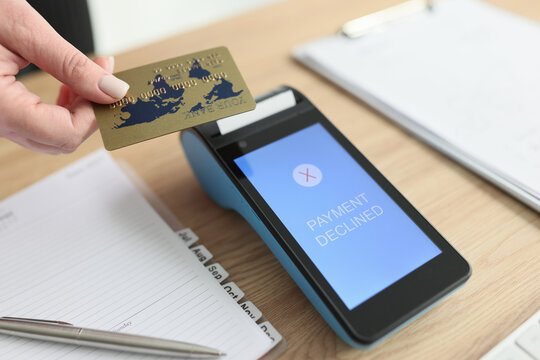Did you know over 70% of small businesses face cash flow problems? These issues can…

High Risk Merchant Account Providers: How to Qualify and Choose the Right One
Did you know the global high-risk merchant account market is set to hit $19.5 billion by 2027? It’s growing at a fast 14.9% annual growth from 2022. This shows more businesses need secure payment solutions, even if banks see them as high-risk.
If your business is considered high-risk, finding the right payment processing is key. This could be due to your industry, credit history, or how much you process. This article will help you find the best high-risk merchant account provider for your business. We’ll look at the top options, their pros and cons, and how to pick the right one.
Key Takeaways
- The high-risk merchant account market is growing fast, thanks to the need for safe payment solutions.
- High-risk businesses need special providers to accept card payments.
- It’s important to know the good and bad of high-risk merchant account providers.
- Choosing the right provider means looking at fees, chargeback help, and other payment options.
- Working with a top high-risk merchant account provider such as IntegralPay helps your business deal with digital payment issues and lower risks.
What Is a High-Risk Merchant Account?
A high-risk merchant account is a special bank account for businesses at high risk of chargebacks and fraud. This risk can come from the business type, its financial past, or the industry it’s in. Industries like CBD, e-cigarettes, credit repair, MLM, and adult products are often seen as high-risk.
Other factors can also make a business high-risk. These include bad credit, being new, relying on international sales, or being in heavily regulated fields. High-risk merchant accounts have higher fees, stricter rules, longer sign-up times, and more cash needs. They also have higher chargeback fees and limits on how much you can process.
| Factors Contributing to High-Risk Merchant Accounts | Typical Features of High-Risk Merchant Accounts |
|---|---|
|
|
Businesses in these high-risk groups often struggle to get a merchant account. Traditional banks are wary because of the fraud risk and regulatory risks. But, specialized high-risk merchant account providers can help. They offer ways for these businesses to process payments and grow.
Advantages and Disadvantages of High Risk Merchant Account Providers
High-risk merchant accounts have both good and bad sides for businesses. They let companies in risky fields like ecommerce and gambling get payment solutions. This opens doors for them to sell more worldwide.
These accounts also bring better security. They have stronger fraud protection and can handle more transactions. This is great for businesses at risk of big financial losses.
| Advantages | Disadvantages |
|---|---|
| Market access for high-risk industries | Higher processing costs |
| Support for global sales | Rolling reserves |
| Increased security measures | Longer settlement periods |
| Flexible volume restrictions | Stricter terms and conditions |
| Resilience to chargebacks | Potential reputational considerations |
But, there are downsides too. Businesses might pay more for processing and face longer wait times for money. The rules are tighter, and there could be bad press risks. So, companies need to think hard before choosing a high-risk merchant account.
High Risk Merchant Account Providers: How to Qualify and Choose the Right One
To qualify for high-risk merchant services, you need to go through a detailed application process — get started now with IntegralPay! First, figure out your business’s risk level. This means looking at your industry, how many transactions you do, and your chargeback history. After understanding your risk, collect all the needed documents like business licenses and financial statements.
Choosing the right high-risk merchant account provider is key. Look for one that knows your industry well and offers good terms. They should also have strong security and reliable support. Show that your business is financially stable and have a plan to handle chargebacks to increase your chances.
When negotiating your high-risk merchant account, be ready for higher fees and stricter rules. But, a good provider will work with you to find terms that fit your business. Keeping your processing history positive is crucial for better terms later on.
| Key Factors to Consider | Strategies for Success |
|---|---|
| Understanding your business’s risk level | Assess industry, transaction volume, and chargeback history |
| Gathering necessary documentation | Obtain business licenses, financial statements, and processing history |
| Choosing a specialized provider | Look for experience in your industry, favorable terms, and robust security |
| Demonstrating financial stability | Provide evidence of your business’s financial health and stability |
| Negotiating terms | Be prepared to pay higher fees and accept stricter processing limits |
| Maintaining a positive processing history | Strive to keep chargebacks and other issues to a minimum |
By using these strategies, you can find the right high-risk merchant account provider. This will help your business grow and succeed.
Conclusion
High-risk merchant accounts are crucial for businesses in risky or fraud-prone industries. They come with higher fees and stricter rules. But they also offer important benefits like global sales and better security.
Understanding what makes a business high-risk is key. Knowing the pros and cons and how to choose the right provider helps. This guide has covered all you need to know about high-risk merchant accounts.
Whether you’re new or established in a high-risk field, the right account can open doors. It helps manage risks and sets your business up for success. With the right partner, you can overcome challenges and focus on what matters most: your customers.



Comments (0)